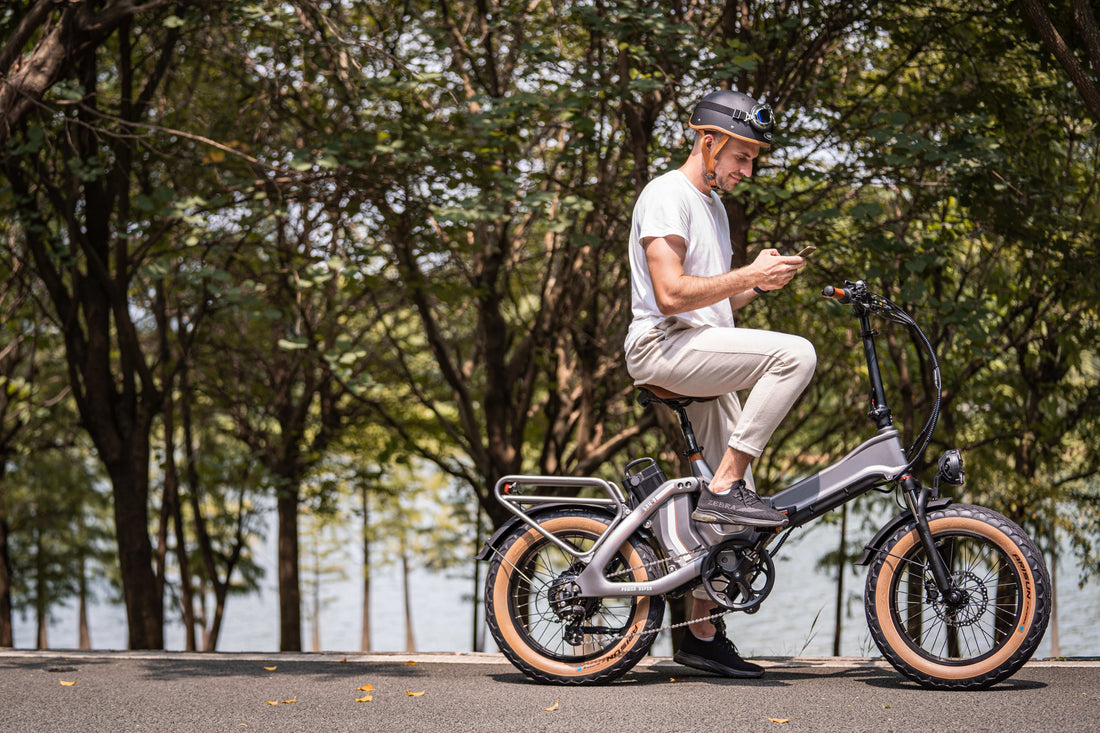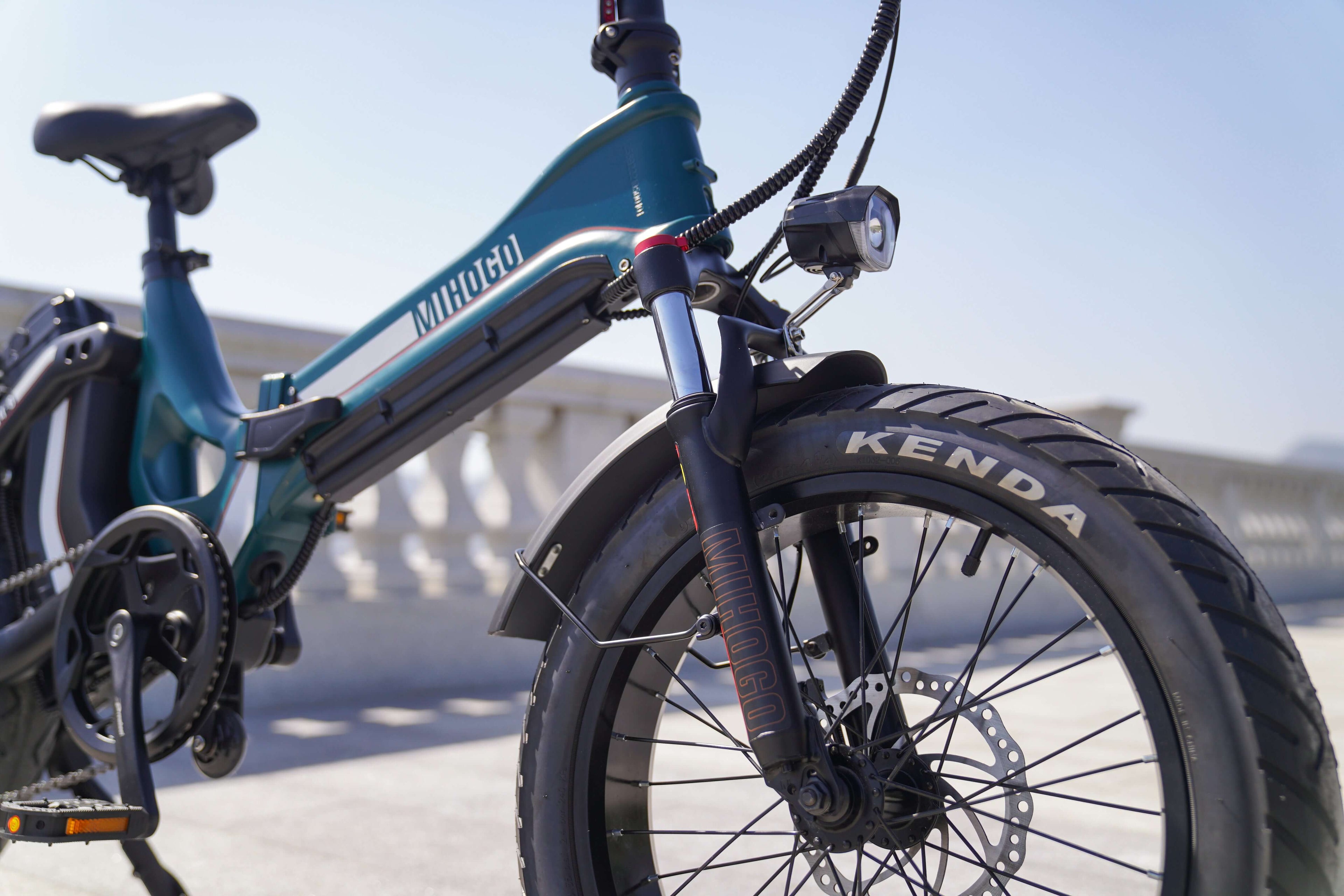Understanding European Ebike Classifications
Standard Electric Bikes (Pedelecs)
In Europe, standard e-bikes are treated as regular bikes and can use bike paths unless otherwise stated by local authorities. The EU has established unified regulations under directive 2002/24/EC with three core requirements:
- Motor Power: Maximum 250W continuous rated power
- Speed Assistance: Cuts off at 25 km/h (15.5 mph)
- Pedal Assistance Only: Motor only engages when pedaling
Mihogo's EU-Compliant Electric Bikes
All Mihogo electric bikes meet these European standards, ensuring full bike path access:
- Mihogo ONE Utility EBIKE: Premium utility model with 250W motor
- Mihogo Air Max: Lightweight urban commuter with extended range
- Mihogo Mini: Compact folding design perfect for city cycling
- MIHOGO RX 2.4: Versatile all-terrain model for diverse riding conditions
Where You CAN Ride Your Mihogo Ebike
Bike Paths and Cycle Lanes
Standard e-bikes are allowed on bike lanes and pedestrian areas throughout Europe. Your Mihogo ebike can access:
- Dedicated cycle paths in cities and towns
- Shared-use paths with pedestrians (ride considerately)
- Rural cycling routes and greenways
- National cycle networks like EuroVelo routes
- Park trails designated for cycling
Urban Infrastructure
European cities are rapidly expanding cycling infrastructure. Cities are investing in dedicated bike lanes and charging stations, accelerating e-bike adoption. Mihogo riders can utilize:
- Protected bike lanes
- Cycle superhighways
- Bike-sharing lane spaces
- Campus cycling areas
- Recreational park paths
Country-Specific Access Rights
Germany
Standard e-bikes can be used on bike lanes and pedestrian areas. Germany leads European ebike adoption with extensive cycling infrastructure.
Netherlands
In the Netherlands, standard e-bikes are allowed on bike paths, and you must drive on the mandatory cycle path or the bicycle/moped path. The Netherlands has the most comprehensive cycling network globally.
France
Standard e-bikes are allowed on bike paths, whereas speed pedelecs are restricted to regular roads. French cities increasingly prioritize cycling infrastructure.
What You Need to Know About Trail Riding
Mountain Bike Trails
Many mountain bike trails welcome electric bikes, but check local regulations. The MIHOGO RX 2.4 is particularly suited for trail riding with its robust design and reliable motor assistance.
Forest and Nature Trails
Access varies by region and trail management. Generally, trails open to bicycles also permit compliant electric bikes. Always respect:
- Trail-specific rules and signage
- Environmental protection areas
- Wildlife conservation zones
- Private property boundaries
Safety on Shared Paths
When riding your Mihogo ebike on shared paths:
- Announce your presence with a bell or verbal warning
- Reduce speed around pedestrians and traditional cyclists
- Be extra visible with lights and reflective gear
- Follow right-of-way rules in your country
Speed Pedelecs: Different Rules Apply
Speed pedelecs are permitted to use bike paths in some countries, though they must adhere to specific regulations. However, most speed pedelecs (45 km/h assistance) face restrictions:
- May require registration and insurance
- Often banned from cycle paths
- Need helmet use in many countries
- Treated as moped-class vehicles
All Mihogo models comply with standard pedelec regulations, ensuring maximum path access.
Age and Safety Requirements
Minimum Age Requirements
Age restrictions vary: people who ride pedelecs must be over 14 years old in most countries, with some variations:
- Most EU countries: 14+ years
- Netherlands: 16+ for speed pedelecs
- No upper age limit for standard ebikes
Helmet Requirements
Helmets are not required for standard e-bike users in most countries, though wearing helmets is advised. While not legally mandated, helmet use is strongly recommended for safety.
Equipment Requirements
Your Mihogo ebike should include:
- Front white light and rear red light
- Reflectors on pedals and spokes
- Functioning bell or horn
- Two independent braking systems
Practical Tips for Mihogo Riders
Planning Your Route
Use cycling apps and websites to plan ebike-friendly routes:
- Komoot: Excellent for European cycle route planning
- Strava: Popular among cycling communities
- Local cycling websites: Often provide detailed path information
- Municipal websites: Check for local cycling maps
Charging and Range Considerations
Plan longer rides considering your Mihogo's battery range:
- Urban commuting: Most models offer 40-80km range
- Trail riding: Factor in terrain and assistance level
- Charging stations: Increasingly available in European cities
- Removable batteries: Can be charged separately indoors
Etiquette and Best Practices
- Ride predictably and signal turns
- Maintain moderate speeds on shared paths
- Give way to pedestrians and traditional cyclists
- Park responsibly in designated areas
- Respect quiet hours in residential areas
The Future of Ebike Access
By 2030, eBikes are expected to account for 50% of all bicycle sales in Europe. This growth drives continued infrastructure investment and supportive policies.
Emerging Trends
- Smart integration: Connected bike path systems
- Expanded networks: More dedicated cycling infrastructure
- Policy harmonization: Standardized EU regulations
- Cargo bike accommodation: Specialized infrastructure for utility cycling
Legal Compliance and Documentation
Required Documentation
For standard Mihogo pedelecs, minimal documentation is needed:
- CE marking: All Mihogo bikes include required EU certification
- Manual and warranty: Keep for reference
- Purchase receipt: For warranty claims
- No registration required for standard pedelecs
- No insurance mandatory (though recommended)
Border Crossing
You can buy a bike in Germany and ride it legally in France without a second thought thanks to harmonized EU regulations. Your Mihogo ebike provides seamless European travel capability.
Conclusion: Embrace Electric Freedom Responsibly
European regulations provide extensive access for compliant electric bikes like those in the Mihogo range. Standard e-bikes are treated as regular bikes, so they can use bike paths unless otherwise stated by local authorities.
Whether you choose the versatile Mihogo ONE Utility, the efficient Air Max, the convenient Mini, or the adventure-ready RX 2.4, you're investing in a mobility solution that opens up Europe's extensive cycling infrastructure.
The key to enjoying your Mihogo ebike on European paths and trails is understanding local regulations, riding considerately, and maintaining your bike properly. As infrastructure continues expanding and adoption grows, electric bikes represent the future of sustainable European transportation.
Ready to explore Europe's cycling network? Discover the complete Mihogo electric bike collection and start your electric mobility journey today.






